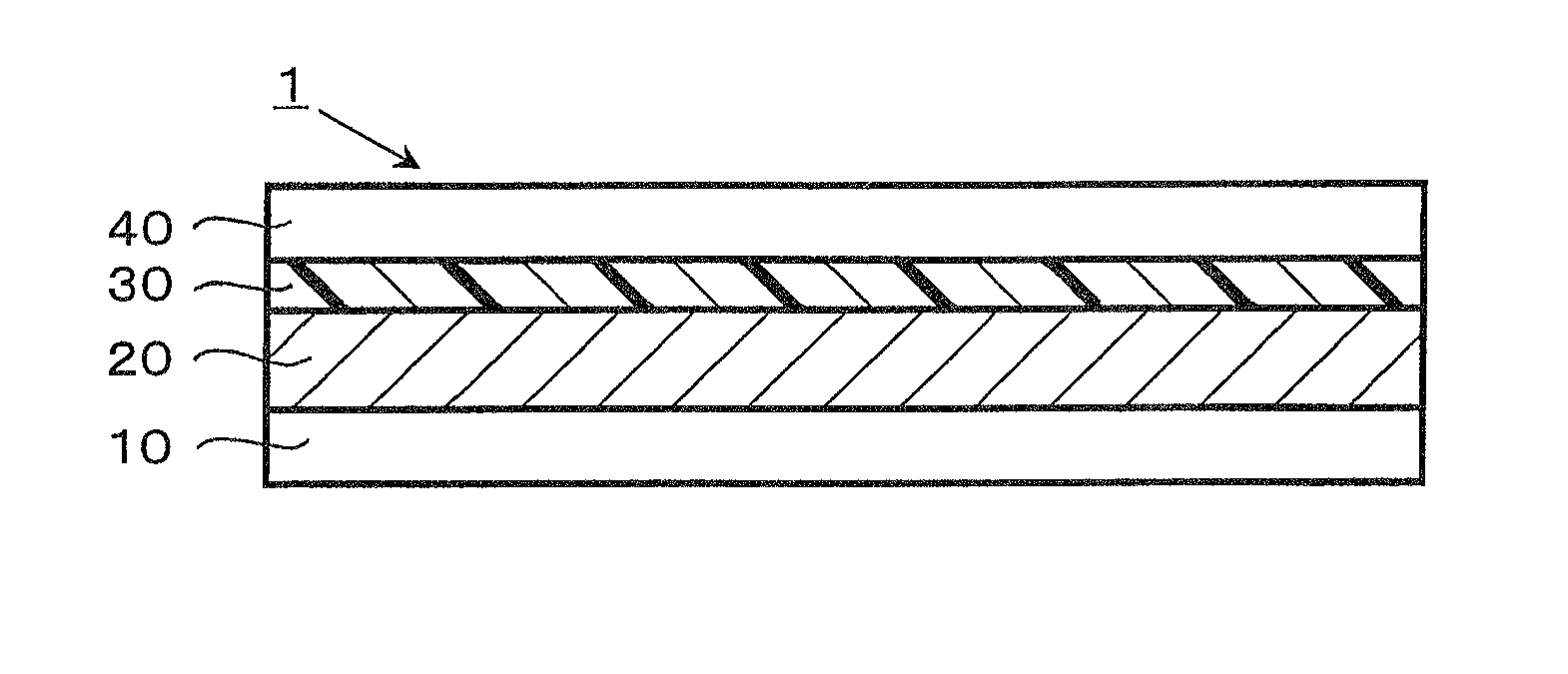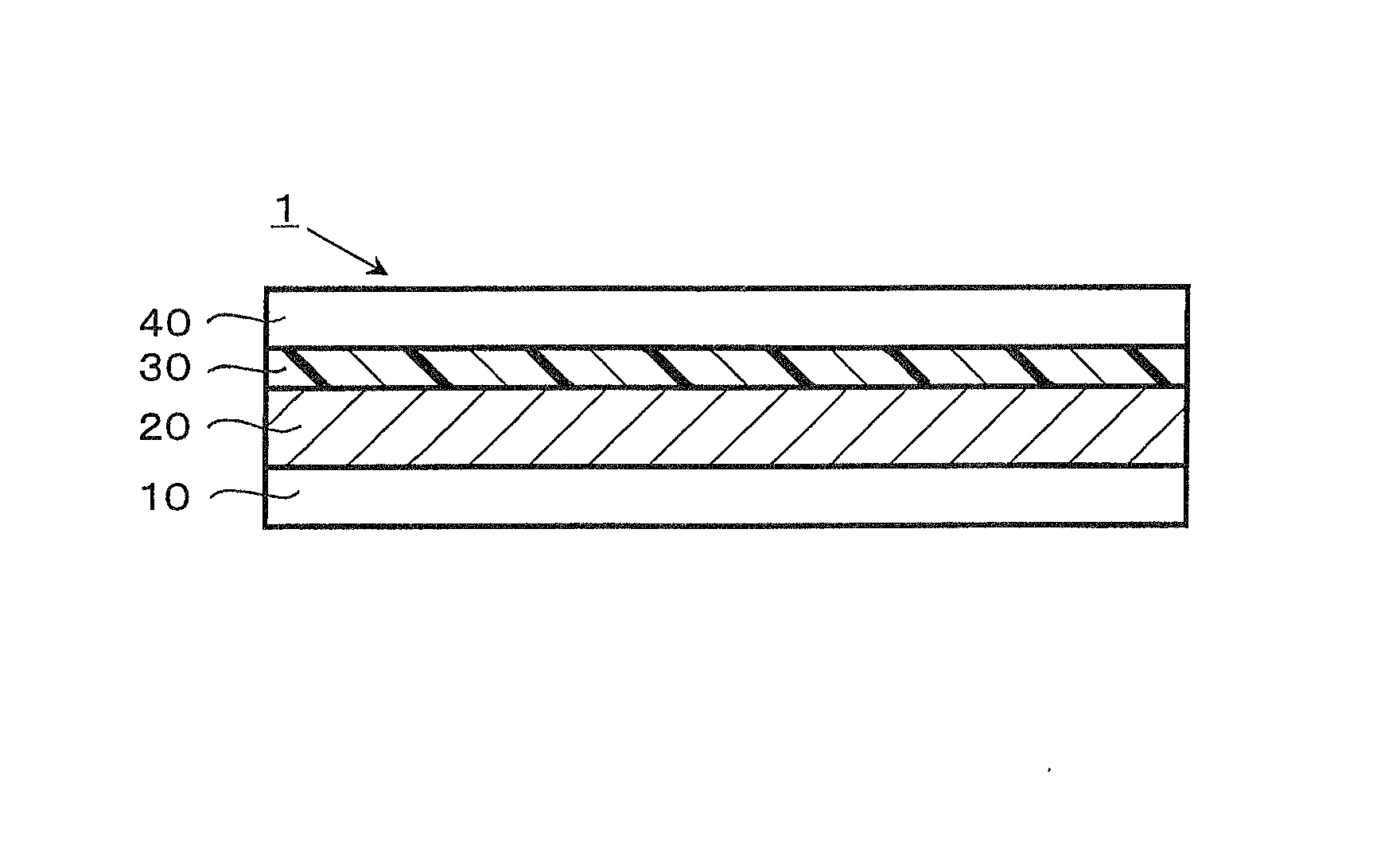Dye-sensitized solar cell, dye-sensitized solar cell module, and coating liquid for forming electrolyte layer
a solar cell and solar cell technology, applied in the direction of light-sensitive devices, capacitors, electrolytic capacitors, etc., can solve the problems of reducing photoelectric conversion efficiency, risk of liquid leakage, and serious environmental problems, and achieve good photoelectric conversion efficiency, excellent durability, and improved stability of the electrolyte layer. , the effect of improving the stability of the electrolyte layer
- Summary
- Abstract
- Description
- Claims
- Application Information
AI Technical Summary
Benefits of technology
Problems solved by technology
Method used
Image
Examples
example 1
[0092]Potassium iodide (0.043 g) was added to a solution obtained by dissolving, as a cationic cellulose derivative, cationic hydroxy ethylcellulose cationized with 3-chloro-2-hydroxy propyltrimethyl ammonium chloride (Daicel Finechem Ltd.; JELLNER QH200; degree of substituion: m=1.3; cationization rate: 35% of —CH2CH2OH groups) (0.14 g) in methanol (2.72 g), followed by agitation for dissolution. Then, 1-ethyl-3-methylimidazoliumtetracyano borate (EMIm-TCB) (0.18 g), 1-propyl-3-methylimidazolium iodide (PMIm-I) (0.5 g), and I2 (0.025 g) were added to the solution, followed by agitation for dissolution. As a result, a coating liquid for forming an electrolyte layer available for coating was prepared.
examples 2 to 13
[0093]A coating liquid for forming an electrolyte layer was prepared as in the case of Example 1 except that the composition was adequately changed. The compositions of different coating liquids are shown in tables 3 to 5. In addition, the coating liquid prepared in Example 13 is identical to that prepared in Example 7. The term “KI proportion (weight proportion)” used in the tables denotes the proportion of the total proportion of all materials other than a solvent which constitute an electrolyte layer accounted for by KI.
PUM
| Property | Measurement | Unit |
|---|---|---|
| thickness | aaaaa | aaaaa |
| thickness | aaaaa | aaaaa |
| thickness | aaaaa | aaaaa |
Abstract
Description
Claims
Application Information
 Login to View More
Login to View More - R&D
- Intellectual Property
- Life Sciences
- Materials
- Tech Scout
- Unparalleled Data Quality
- Higher Quality Content
- 60% Fewer Hallucinations
Browse by: Latest US Patents, China's latest patents, Technical Efficacy Thesaurus, Application Domain, Technology Topic, Popular Technical Reports.
© 2025 PatSnap. All rights reserved.Legal|Privacy policy|Modern Slavery Act Transparency Statement|Sitemap|About US| Contact US: help@patsnap.com


